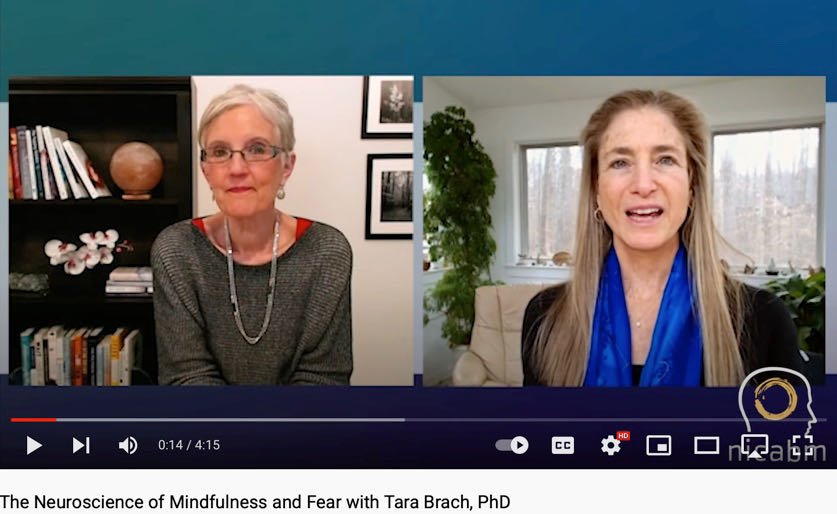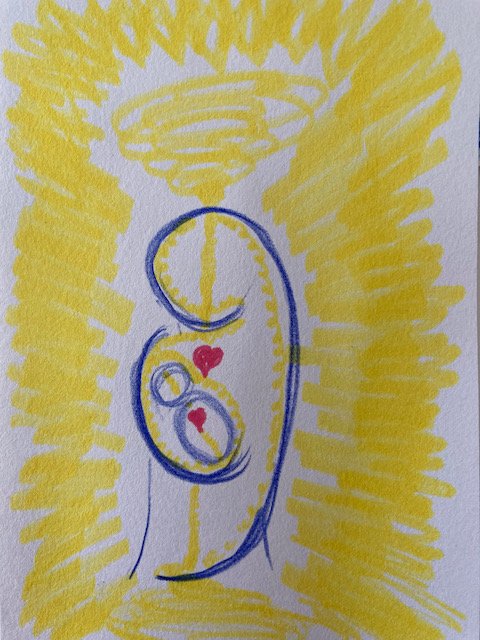States of consciousness from at therapeutic perspective - Part 3 - The Grounded Adult
Part 3 in this series is the state of consciousness of the “Grounded Adult”. “Grounded” means to be present here and now. “Adult” means a functioning state of getting on with normal life such as seeing what needs to be done and doing it, taking responsibility for ones life with regards to care of self and others (Physically, Materially, Mentally, Emotionally, Socially and Spiritually). This state of consciousness can also be called the “Mother”, “Loving Parent”, “Loving Adult”. For the purpose of this blog I will call this State of Consciousness the “Grounded Adult”
As I explained in the last blog, the inner child state is the domain of the unconscious limbic brain. The Grounded Adult is the domain of the conscious functions of the cortex part of the brain. This is the domain of conscious awareness of what is happening, thinking, reasoning, problem solving, creativity, language etc. This is the domain of choice. We can choose to be a grounded adult or not...this choice is something we can cultivate with a bit of effort to become a useful habit.
The cortex part of the brain is all the wiggly bits on top and around the limbic brain. The cortex is represented by our fingers in the hand model of the brain. See next image below for another video on the hand model of the brain by Tara Brach.
As we discussed in part 2, all human beings (and all mammals) have a limbic brain therefore we ALL have the vulnerability of having feelings and needs. This vulnerability is what I call the Inner Child. Being vulnerable means that something in us needs emotional nurturing, empathy and protection. How we attend to the vulnerable part of us is to stay present and take actions to care for our feelings and needs. We do this through being there for ourselves as a Grounded Adult. Neurologically and Anatomically this is literally our Cortex part of the brain hugging limbic brain…. I extend this as an analogy of our inner grounded adult holding our inner child.
If, as a child, our vulnerability was not held in the way it needed to be then the limbic brain can be overactive. As I explained in Part 2, the limbic brain fires 7 times faster than our thinking brain. So we actually have no control over the limbic brain firing. It is automatic. This can be a compassionate piece of the puzzle as we often think we should be able to stop emotional feelings, especially when they are messy. What we do have control over is to be able to cultivate the mindful, grounded adult which has a wonderful calming effect on the limbic brain. It is like a muscle… the more we use it the stronger it gets. This is probably why the mindfulness movement is so popular as it is a wonderful way to create calm for most people. Psychologist and Mindfulness meditation teacher, Tara Brach gives a lovely explanation of how this works, using Dr Dan Siegel's hand model fo the brain, in this interview. Click on the image below to watch the interview.
The ancient healing modality of Ho’oponopono says that the most important relationship in the universe is between the mother and child. In Ancient Australian Aboriginal imagery the common symbol of the circle with a dot inside also represents that of the Mother and Child. Ancient cultures knew the importance of a secure foundation of care by a caregiver is what the fabric of society depends on. We are wired for connection - our vulnerability needs this to feel safe. If we can't or don’t make this caring connection with our vulnerability, then we are abandoning our Inner child and we can feel emotionally, mentally and physically suffering.
The theory in Schema therapy is that to have this natural caring connection with our vulnerability requires the following core emotional needs to be taken care of when growing up as a child:
The core emotional needs are grouped across 5 areas:
A secure attachment to others - there is an emotionally safe base to go to when you need soothing or care
Freedom to express valid needs and feelings - You can express feelings and needs….
Autonomy, competence and a sense of identity
Spontaneity and play
Realistic limits and self-control
If we did not receive these in a “good enough” way then this is traumatic for the child (the wounded child) and has to create strategies to survive (wounded child protector). The fact is it is never possible to meet the emotional needs of a child 100% of the time, but research shows that it just needs to be “good enough” to create an inner security. People with secure attachment appear to be “normal” in their relationship and functioning as they have an innate wiring to connect with their vulnerability and the vulnerability of others. If we did not have this secure attachment, we learn to attach in other ways to survive. This survival mode creates confusion in the neurological wiring that is needed to be able to connect with our own vulnerability in the grounded caring way it needs.
Taking care of feelings and needs is an ongoing affair….feelings and needs don’t go away so we need to develop habits that are helpful to taking care of our needs. In my experience what tends to happen is that the more you cultivate being a grounded Adult for your vulnerable parts, the more the vulnerable parts can show up. It’s like updating a computer program….there is more you can do once you upgrade.
HOW TO CULTIVATE GROUNDED ADULT CONSCIOUSNESS
Intention is everything..... Making a Commitment to befriend and care for ourselves.
Nearly 10 years ago I did Dr Margaret Paul’s course “Learning to Love Yourself”. She addresses the dilemma of self abandonment of our inner child by creating a program to teach how to connect and care for our vulnerable parts of us. The first step in her 6 steps of Inner Bonding is the willingness to feel pain and to take responsibility for our feelings. This is making the intention that I am willing to be open to learn how to be a loving grounded adult for myself. Making the intention is the first step. Even if we can’t do it yet, we just need to be open to learning how to do it. Trust that our intentions are powerful …… as they say in the 12 steps “the work works if you work it”. This has certainly been my experience with myself and others.
In my experience this step is often a layered process. Like couples sometimes renew their marriage vows, clients can sometimes make deepening commitments to being present to themselves. It is not black and white but a process of growth. The small seedling does not become a big strong tree overnight. It grows according to conditions and eventually becomes tall and strong and then it can be of great benefit for others as shelter and food. That is the nature of the tree. Thus is the nature of our Grounded Adult, the more we are present, the more capacity we have to be there for ourselves and others.
Making friends with ourselves can start very simply with any inner state we notice. I like the N.A.W process from Trauma Therapist Dr Janina Fisher.
N = Noticing what is happening ie. I feel fear.
A = Acknowledge the fear ie. I know you are feel scared of doing this new thing.
W = Welcome the emotion/feeling or need. Saying out loud or mentally, "Fear you are welcome here" and/or "Fear I am here for you".
Regulating your nervous system
With mindfulness we can be curious about what things help us to soothe limbic brain overactivity. Mindfulness by itself can be very regulating. I explain the process and the grounding affect of mindfulness in my blog here. Tara Brach explained in the video above how this works neurologically. With mindfulness we start to be able to cultivate awareness as to which state of consciousness is present and what is needed to respond.
There are many many ways to soothe and regulate when our limbic brain becomes overactive with feelings, emotions and/or shut down. There are too many to list here so if you are interested to read further, you can access many resource ideas in my blog here. The idea is to bring the frontal lobes online to decrease the overactivity of the limbic brain, especially the amygdala which hold past memories. As most triggers of dysregulation of emotions are memories, one of the easiest ways to regulate is to come into the present moment via the 5 senses. Here is a simple exercise called 5,4,3,2,1
Sight - name 5 things you can see right now OR 5 colours that you like OR 5 colours you don’t like
Hearing - name 4 sounds you can hear right now
Touch - mindfully touch 3 textures around or on you such as the fabric of the clothes you are wearing, your skin, nails, hair etc.
Taste - some people might carry a little bottle of tic tacs or similar. If you dont have that then imagine 2 tastes of things ie, an apple, orange, etc.
Smell - smell 1 thing…. Smell often has a potent effect on the limbic so carrying a little bottle of your favourite essential oil around may be helpful.
Literally stopping to smell the roses can have a very healing effect on our nervous system!
Connection
As human beings, we are wired for connection. The term co-regulation comes from poly-vagal theory which I touched on in Part 2. The nervous system is designed to settle and feel safe through co-regulating through another human that is already settled, safe and friendly. An example is if you were travelling in a storm and arrived at a friends house that was welcoming, warm and cosy with hot cup of tea… there would be a big difference to arriving at a dark cold house with no-one there.
Options for social resources are mentioned in my resources blog here. It may be helpful for some to identify a “care team” of people or places that are there for emotional nurturing and support. If we have a team then if one is not available then there are others to choose from.
Thank you for taking the time to read this blog. I hope it has been of benefit. Please feel free to send feedback via the contact page on my website. If you are triggered by any material, my resources blog is here.
Next in the series of States of consciousness from a therapeutic perspective will be Part 4 - The Higher Self.






